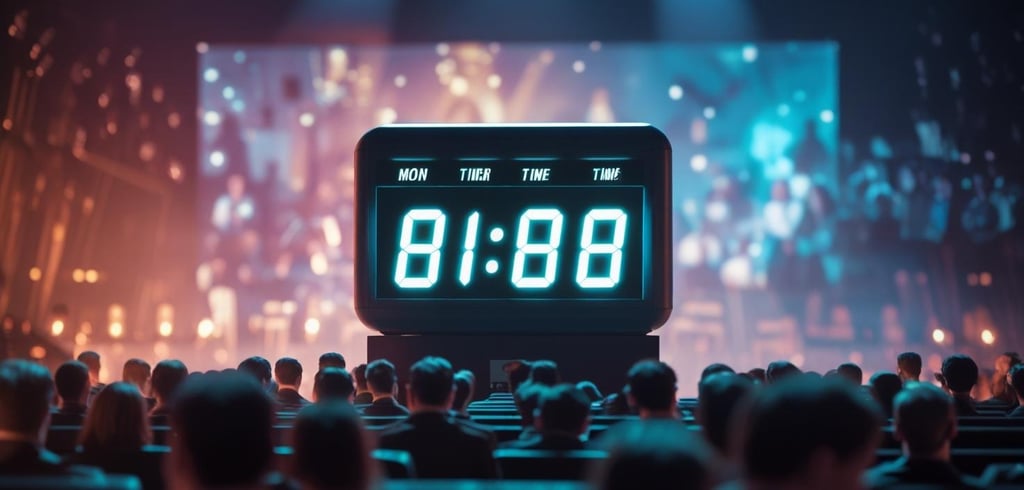Start sending invites for free - no card required - Click here
Staying on Time: The Presenter’s Guide to Countdown Timers
Every speaker wants to deliver a message that resonates — but running over time can quickly turn a great talk into a logistical problem. That’s why more presenters are turning to simple tools like a countdown timer for presentation to keep their sessions efficient and effective.
BLOGS
6/27/20252 min read


Every speaker wants to deliver a message that resonates — but running over time can quickly turn a great talk into a logistical problem. That’s why more presenters are turning to simple tools like a countdown timer for presentation to keep their sessions efficient and effective.
In both digital and physical settings, managing time has become a defining skill for professionals. A subtle event timer or visual stagetimer not only ensures punctuality but also enhances your audience’s experience.
The Cost of Poor Time Management
When presentations run long, it doesn’t just affect the speaker — it cascades into the broader agenda. Late sessions eat into breaks, cut Q&A short, and often reduce attendee satisfaction.
A well-placed stage timer can avoid these disruptions. It silently communicates how much time remains, letting speakers adapt without losing flow.
Countdown Timers in Live & Virtual Events
Countdown timers have become standard at:
Corporate Events: Where multiple departments or external speakers are involved.
Training Sessions: Where a timer for presentation helps instructors manage hands-on tasks.
Virtual Webinars: Where strict session durations matter for keeping remote attendees engaged.
Regardless of the format, a countdown timer keeps things professional, punctual, and focused.
Creating a More Polished Speaker Experience
Most great talks follow a formula: clear start, structured body, strong close. But what makes the formula work is timing. Speakers who use a countdown timer for events are more likely to stay within their plan, allowing for better storytelling and audience interaction.
Professional events often feature multiple speakers and tightly packed schedules. A simple timer lets each person focus on delivery, knowing they won't accidentally overrun.
Making the Timer Work for You
Position it wisely: Ideally where only the speaker can see it.
Customize if possible: Color changes or beeps near the end are helpful.
Practice beforehand: So the timer becomes part of your natural rhythm.
Incorporating a timer for presentation into your rehearsal helps reduce surprises during the live session.
Final Thoughts
Time limits aren’t constraints — they’re structure. A speaker who respects the clock demonstrates discipline and respect for the audience’s time. With a countdown timer or stage timer, presenters gain a quiet but powerful assistant to guide them.
As events become more dynamic and multi-layered, the value of staying on time only grows. The next time you prepare to step up and speak, remember: the clock isn’t your enemy — it’s your cue.
BulkCalendar.in
Send Bulk & Mass Calendar Invites Instantly
Contact us
Engagement
sales@letscalendar.com
+44 (0) 203 916 5117
© 2025. All rights reserved.
Help?
